A T Hinsu
Illumina next generation sequencing for the analysis of Eimeria populations in commercial broilers and indigenous chickens
Hinsu, A T; Thakkar, J R; Koringa, P G; Vrba, V; Jakhesara, S J; Psifidi, A; Guitian, J; Tomley, F M; Rank, D N; Raman, M; Joshi, C G; Blake, D P
Authors
J R Thakkar
P G Koringa
V Vrba
S J Jakhesara
A Psifidi
J Guitian
F M Tomley
D N Rank
M Raman
C G Joshi
D P Blake
Abstract
Eimeria species parasites can cause the enteric disease coccidiosis, most notably in chickens where the economic and welfare implications are significant. Seven Eimeria species are recognized to infect chickens, although understanding of their regional occurrence, abundance and population structure remains limited. Reports of Eimeria circulating in chickens across much of the southern hemisphere with cryptic genotypes and the capacity to escape current anticoccidial vaccines have revealed unexpected levels of complexity. Consequently, it is important to supplement validated species-specific molecular diagnostics with new genus-level tools. Here, we report the application of Illumina MiSeq deep sequencing to partial 18S rDNA amplicons generated using Eimeria genus-specific primers from chicken caecal contents collected in India. Commercial Cobb400 broiler and indigenous Kadaknath type chickens were sampled under field conditions after co-rearing (mixed type farms, n=150 chickens for each) or separate rearing (single type farms, n=150 each). Comparison of MiSeq results with established Internal Transcribed Spacer (ITS) and Sequence Characterised Amplified Region (SCAR) quantitative PCR assays suggest greater sensitivity for the MiSeq approach. The caecal-dwelling Eimeria tenella and E. necatrix dominated each sample set, although all seven species which infect chickens were detected. Two of the three cryptic Eimeria genotypes were detected including OTU-X and OTU-Y, the most northern report for the latter to date. Low levels of DNA representing other Eimeria species were detected, possibly representing farm-level contamination with non-replicating oocysts or Eimeria DNA, or false positives, indicating a requirement for additional validation. Next generation deep amplicon sequencing offers a valuable resource for future Eimeria studies.
Citation
Hinsu, A. T., Thakkar, J. R., Koringa, P. G., Vrba, V., Jakhesara, S. J., Psifidi, A., Guitian, J., Tomley, F. M., Rank, D. N., Raman, M., Joshi, C. G., & Blake, D. P. (in press). Illumina next generation sequencing for the analysis of Eimeria populations in commercial broilers and indigenous chickens. Frontiers in Veterinary Science, https://doi.org/10.3389/fvets.2018.00176
| Journal Article Type | Article |
|---|---|
| Acceptance Date | Jul 10, 2018 |
| Deposit Date | Jul 24, 2018 |
| Publicly Available Date | Aug 7, 2018 |
| Journal | Frontiers in Veterinary Science |
| Electronic ISSN | 2297-1769 |
| Publisher | Frontiers Media |
| Peer Reviewed | Peer Reviewed |
| DOI | https://doi.org/10.3389/fvets.2018.00176 |
| Public URL | https://rvc-repository.worktribe.com/output/1386644 |
Files
11620.pdf
(832 Kb)
PDF
You might also like
Characterisation of phenotypic patterns in equine exercise-associated myopathies
(2024)
Journal Article
Downloadable Citations
About RVC Repository
Administrator e-mail: publicationsrepos@rvc.ac.uk
This application uses the following open-source libraries:
SheetJS Community Edition
Apache License Version 2.0 (http://www.apache.org/licenses/)
PDF.js
Apache License Version 2.0 (http://www.apache.org/licenses/)
Font Awesome
SIL OFL 1.1 (http://scripts.sil.org/OFL)
MIT License (http://opensource.org/licenses/mit-license.html)
CC BY 3.0 ( http://creativecommons.org/licenses/by/3.0/)
Powered by Worktribe © 2025
Advanced Search
